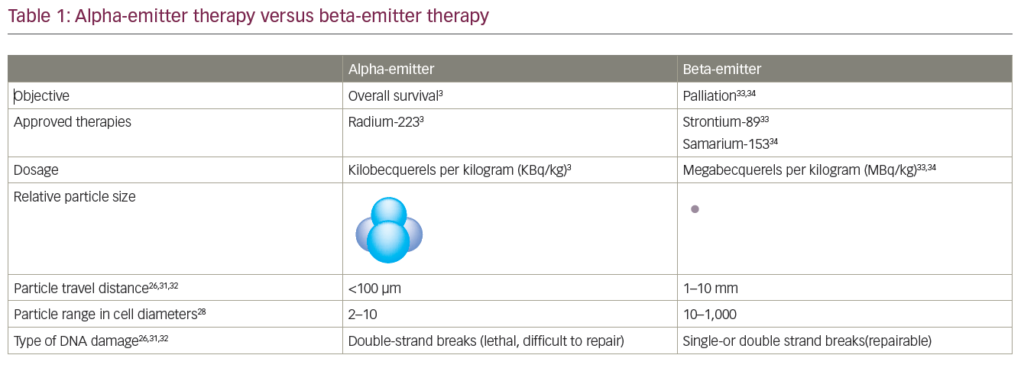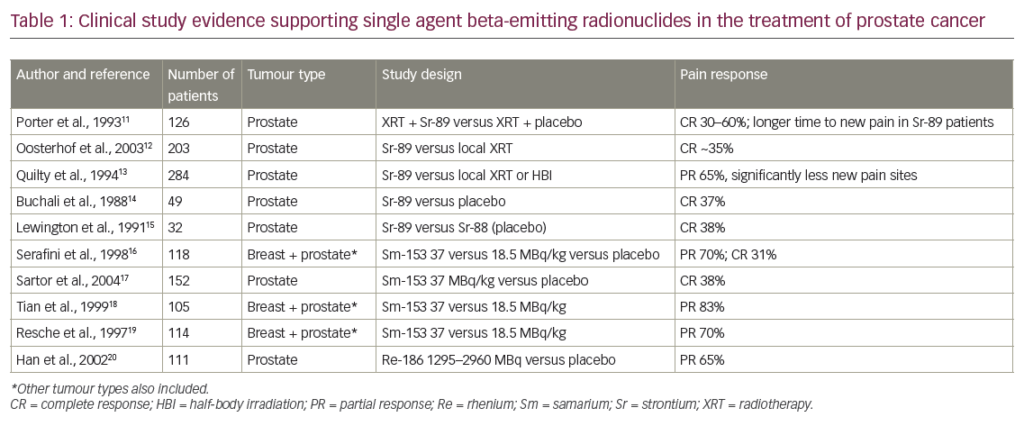The introduction of prostate-specific antigen (PSA) screening made an enormous impact on the incidence of prostate cancer, which increased in the early 1990s and is currently down to pre-PSA screening levels. Screening has caused a change in pattern of disease to an earlier stage but not lower grade. Death rates due to prostate cancer diminished in the 1990s due to a decrease in advanced cases with distant metastasis.
Introduction
About 9.7% of cancers in men are due to prostate cancer; in developed parts of world it increases to 15.3% and in the underdeveloped world it only accounts for 4.3%.1 In the US, the most commonly diagnosed cancer in men is prostate cancer and it is the second most common cause of death after lung cancer. The American Cancer Society estimates that by the end of 2004, about 230,110 new cases of prostate cancer will be diagnosed in the US. One in six men will be diagnosed with prostate cancer, and one in 32 will die of prostate cancer. It is estimated that 29,900 men in the US will die secondary to prostate cancer in 2004.2 Incidence of prostate cancer is highest in the US, Canada, and Scandinivia, and lowest in China and Asian countries.3 This variation could be due to different genetic predisposition, differences in diet, variation in quality of healthcare, and deficiencies in cancer registration; or it could be due to multiple factors mentioned above. Prostate cancer is a disease related to older age as it is very infrequent below the age of 40 but very common above 65. It is estimated that by 2030, with an increase in the proportion of people over 65 to from 12.4% 19.6%, the number of prostate cancer cases will quadruple.4 Funding for prostate cancer has increased in recent times and hopefully this will shed more light on its causes and help to devise prevention strategies.
Predisposing Factors
Age
Aging increases the risk of prostate cancer. Under 40 years old, prostate cancer is rare but over 65 years of age it is very common, accounting for 70% of cases in US.5 The lifetime risk of being afflicted with prostate cancer is 1:6. The possibility of having prostate cancer varies with age, being 13.7% for the age group 60–79 years, 2.2% for those aged 40–59, and 0.005% in those younger than 39 years. The probability of finding prostate cancer when performing autopsies in deceased people is much higher, at about 20% in men between the ages of 50 and 60 years and increasing to 50% in men between 70 and 80.The risk of having pathological evidence of prostate cancer in a 50-year-old man is 42%, the risk of it clinically becoming manifest is 9.5%, and risk of mortality is 2.9%, indicating a high degree of prevalence of sub-clinical disease.7
Race
Asians have the lowest incidence rates of prostate cancer at about 107.2 per 100,000, Hispanics have a slightly higher rate at 127.6 per 100,000,Whites have a rate of 172.9 per 100,000, and African-Americans have the highest rates of 275.3 per 100,000 – about 60% higher than Whites.The death rates also vary between different races, with data from 1992–1999 showing that African- Americans have a ratw five times higher than Asians, three times higher than that of Hispanics, and twice that of Whites.African-Americans are more likely to present with advanced disease than Whites as per results from the Surveilance, Epidemiology and End Result (SEER) program of the National Cancer Institute, but there is no difference in grade.8 Five-year survival rates for African- Americans have improved over the last 30 years but are still less than Whites, at 93% versus 98%.9 Recently, a study based on incidence-based mortality rate (IBM), which takes mortality rate and goes back in time to assess various factors associated with diagnosis of disease, showed that higher mortality in African-Americans may be due to reporting with advanced-stage disease, and not due to a difference in the number of primary tumors or treatment. This approach is different from the survival approach, where a specific group with disease is followed to their eventual vital status.10
Familial Factors
There is an increase in incidence of prostate cancer in persons with a history of prostate cancer in their family – about two to four times higher than in control populations. Those with a family history of prostate cancer tend to have their disease diagnosed six or seven years earlier than controls.11 Family history and hereditary factors are estimated to be important in 5% to 10% of all prostate cancers, and 40% of those cancers diagnosed below the age of 55.The clinical presentation of familial prostate cancer is not sporadic in cancer in presenting at an earlier age, and there is no difference in stage or grade. The factors responsible may be an inherited gene or exposure to a similar environmental factor, or it may simply be that as it is a common disease, it is due to chance alone. Genetic Epidemiology
twin studies, and family-based studies have suggested a genetic role in prostate cancer. Initially it was hoped that linkage studies would help to identify susceptibility genes for prostate cancer like other common cancers such as breast and colon cancers.This unfortunately did not work out as these linkage studies could not always be replicated. Some of the genetic loci identified by linkage studies include hereditary prostate cancer gene 1 (HPC 1) on 1q23-25, predisposing to prostatic cancer (PCAP) on chromosome 1q42-43, cancer of the prostate and brain (CAPB) on chromosome 1p36, locus on chromosome 8p22-23, HPC2 on chromosome 17p, HPC 20 on chromosome 20 q13, and HPCX on chromosome Xq27-28.12 Some candidate genes that have been identified on the basis of linkage studies include elaChomolog2(Ecoli) (ELAC2), ribonuclease L (RNASEL), and macrophage scavenger receptor gene (MSR1). Over 10 different linkage studies have been conducted for prostate cancer.
An analysis of different case–control and cohort studies places an odds risk ratio of 2:5 for familial prostate cancer, and the risk is higher if a brother has prostate cancer compared with the father. Identification of a heritable genetic basis is done by several methods, one of which is a family-based segregation analysis. Several such studies point to an autosomal dominant gene, which is rare with a frequency of 0.003 to 0.006 and a high penetrance of 88% to 97%.13 Twin studies are better placed than family-based segregation studies in identifying genetic bases of disease. Several such registries from Scandanivian countries have shown a concordance rate of 21.1% for monozygotic twins compared with 6.4% for dizygotic twins.14 A definition of hereditary prostate cancer includes cases occurring in the family at less than 55 years old, a case occurring in three successive generations on paternal or maternal side, and three cases occurring in a nuclear family.15
Prostate cancer was also found to occur at a higher rate in families with other cancers such as breast cancer. Carriers of the breast cancer 1 (BRCA1) gene had twice the incidence of prostate cancer of non-carriers.16 Those families with hereditary prostate cancer also had higher incidence of central nervous system tumors.17
Linkage studies from the US and Sweden have pointed to a hereditary prostate cancer gene HPC 1 on the long arm of chromosome one.18 In these families, prostate cancer occurred in up to five relatives and occurred in at least two generations, and cases occurred at a lower age range than usual.19 Later, multiple families with prostate cancer were analyzed and genetic linkage to HPC 1 was found in only 6% of families.20 In some families, studies have identified a gene called RNASEL, which is considered to be a tumor suppressor gene like p53, involved in regulation of apoptosis and proliferation of cells.21–23
Genetic polymorphism is another area studied in prostate cancer, and some genes that have been identified include exon 1 of the androgen receptor gene, which is a transactivation domain with some specific codon repeat patterns – CAG and GGC.24 The length of repeats in these domains has been showed to be of importance in some studies, where if the number of repeats are shorter there is a higher incidence of prostate cancer. In African-Americans and Hispanics, some other genes associated with 5-alpha reductase catalytic activity have been identified including variants like SRD5A2 and Ala 49 Thr.25
Dietary Factors
shown to play a part in clinical development of prostate cancer as per histopathological and migratory studies. It was shown that in Japanese men who migrated to the US the incidence of prostate cancer increased, which is thought to be due to change in their dietary patterns, and risk was higher when they migrated at a younger age.26,27 Some studies have shown risk of prostate cancer to correlate with intake of dietary fat content, intake of diary products, and consumption of red meat, and this correlation was valid in different races.28 Alpha methyl coenzyme-m-reductase is an enzyme that plays an important part in peroxidation of branched chain fatty acids, which are present in large quantities in beef and dairy products. This enzyme is upregulated in patients with prostate cancer compared with controls.29 The hydrogen peroxide produced may damage the genetic components in the prostate, increasing the risk of cancer.
Consumption of soya bean products containing isoflavones may be reason for the reduced risk of prostate cancer in Japan. The components are genistin and daidzin. The mechanism of action of these isoflavones shown in some experimental studies is by inhibiting tyrosine kinase enzymes, which play a part in cell proliferation and angiogenesis.30 Another mechanism attributed is the lowering of androgen levels and increasing sex hormone-binding globulin.
Insulin-like growth factor (IGF) is another agent that may play a role in increasing prostate cancer risk. Diets rich in fats and calories may cause release of growth hormone and insulin, which in turn cause release of IGF, which may decrease cell apoptosis and increase cell proliferation. Studies have shown an increase in risk of prostate cancer by 1.7 to 4.3 times in people with higher levels of IGF-1.31,32
Several studies have revealed the risk of prostate cancer is reduced in people who consume tomatoes in their diet. Tomato sauce contains an antioxidant called lycopene and the risk of prostate cancer was decreased by 16% compared with those who did not consume tomato sauce.33,34 One study also showed decreased levels of PSA and increased serum levels of lycopene in those who had tomato sauce a few weeks prior to radical prostatectomy.
Selenium and vitamin E are other micronutrients being studied that have been shown to reduce the risk of prostate cancer.35 In a study where patients received selenium, after 4.5 years of follow-up, prostate cancer incidence decreased by 66% compared with placebo. Similarly, in a Scandinivian chemoprevention study, patients receiving vitamin E and beta carotene36 had a 40% decrease in incidence and mortality from prostate cancer compared with controls.37,38
Role of Hormones and other Pre-disposing Factors
Both in development and growth of the prostate and treatment of prostate cancer, androgens play an important role – Charles C Huggins recieved a Nobel prize in 1941 for his seminal work in the area.39 It has been shown that men who have their testes removed before puberty and those who have inborn errors of androgen metabolism do not develop prostate cancer, signifying the importance of androgens in the growth and differentiation of prostate.40 Five-alpha reductase is an enzyme that converts testosterone to dihydrotestosterone, which acts on prostatic epithelial cells. Finasteride is a drug that inhibits the enzyme and has been shown to be of value in causing shrinkage of the prostate in benign prostatic hyperplasia. Studies have shown that it also reduces risk of prostate cancer.41 Androgen deprivation by antiandrogens like flutamide and luteinizing hormone-releasing hormone agonists is an established treatment in advanced prostate cancer.
Some studies like cancer prevention studies have shown that as body mass index (BMI) increases, risk of prostate cancer increases.The risk has been up to 34% higher in those with a BMI in the 35–39.9 range compared with controls with normal BMI.42 Data from the Framingham study have shown that higher bone mass may be a risk factor for prostate cancer, with the increase in risk approximating 60% to 90%.43 Further, Physicians’ Health Study data have shown that the greater the amount of calcium consumed, the higher the risk for prostate cancer.44
In studies on factors such as social class, smoking,45 alcohol consumption,46 physical 47 and sexual activity,48 and vasectomy,49 the summary is that none showed a relationship with risk of prostate cancer, though some studies have shown increase in risk of prostate cancer with an increase in number of sexual partners.50 There is an increase in odds ratio to 1.57 for prostate cancer in those who had prostatitis.51,52
Impact of Screeningon Diagnosis
The American Cancer Society recommends that all men aged 50 years and above should undergo annual digital rectal examinations (DREs) and PSA testing.53 In cases where there is a high risk of prostate cancer, such as with African-Americans or those with a family history of prostate cancer, men should be screened from age 45, and if there are multiple relatives involved, they should be screened from age 40.Those who have abnormal findings should undergo transrectal ultrasound and biopsy for definitive diagnosis. Studies of DRE and PSA have shown that in men aged over 50, DRE or PSA was found to be abnormal in 36% and prostate cancer was diagnosed by biopsy in 6.4%. Abnormal findings were higher in African-Americans and those with positive family history, occuring in 34% and 42% respectively with positive biopsies being 10.3% and 10.5%, respectively.54 Screening had different positive predictive values in different groups, the highest being in African-Americans (48%), followed by those with positive family history (38%), and the lowest in those without any risk factors (30%).55 PSA density, PSA velocity, ratio of free and total PSA and age-specific PSA are some of the determinants used to increase specificity of PSA screening and decrease negative biopsies.55
Screening and Impact on Incidence of Prostate Cancer
PSA screening in different countries has altered the pattern of incidence. Data from the SEER program show that the incidence of prostate cancer in the US increased steadily during the 1980s, with an increase of 85% between 1987 and 1992, and reached an ageadjusted value of 190.1 per 100,000 men.56 The incidence subsequently decreased by 29% between 1992 and 1996 and increased again to levels seen before PSA screening.
Screening and Mortality of Prostate Cancer
Mortality data from the SEER program show that rates increased gradually from 1976 when it was 22.1 per 100,000 to 1992 (26.7 per 100,000), but decreased again through to 1997 (15.9 per 100,000).The decrease observed in mortality during the decade of 1990s was mainly due to a reduction of death from distant disease, while that due to loco-regional disease actually increased during the 1990s until 1997 when it decreased slightly in Whites but not in African- Americans.56–58 It is also important to recognize that 50% of mortality is cancer-specific while the rest is due to co-morbid conditions like cardiovascular disease.59
Screening and Stage and Grade of Prostate Cancer
DRE is less sensitive than PSA in detecting tumors at an earlier stage. Of all tumors detected, 75% are now due to PSA screening.60 The number of patients with regional or distant disease has reduced considerably.The proportion of patients presenting with metastatic disease decreased from 17% in the late 1980s to 4% during late 1990s.61 The proportion of patients presenting with extracapsular spread decreased from 15% to 6% over this period.Those presenting with T1 tumors increased from 14% to 51%, and this stage migration has been seen across all ethnicities in the US.
Screening did not cause a change in the grade of prostate cancer in patients to a lower grade. Most of the tumors are moderately differentiated accounting for 60%, with about 20% poorly differentiated and about 20% being of low or unknown grade. Histologic grade is an important prognostic factor for survival. With conservative management, 15-year mortality rate increases from 4% to 7% for men with well differentiated tumors to 60% to 87% for those with poorly differentiated tumors.62
Chemoprevention
A total of over 11 randomized studies are accruing patients for prostate cancer prevention. Several studies are contributing to data that show a considerable number of cancer deaths can be prevented by changes in diet and life-style or by using medications. Some of the chemoprevention studies include the Prostate Cancer Prevention Trial, the Lycopene Trial, the Dutasteride Trial, the Rofecoxib Study, the Physicians Health Study, and the Isoflavones Study.63 The results of the Prostate Cancer Prevention Trial, where 5mg of Finasteride was administered to 18,881 men, showed a decrease in prostate cancer prevalence of 24.8%.64
Conclusion
Various epidemiological studies would help in devising strategies to reduce the incidence of prostate cancer. Prostate cancer screening has changed the pattern of disease to earlier-stage but has not caused a shift in histology to a lower grade.













